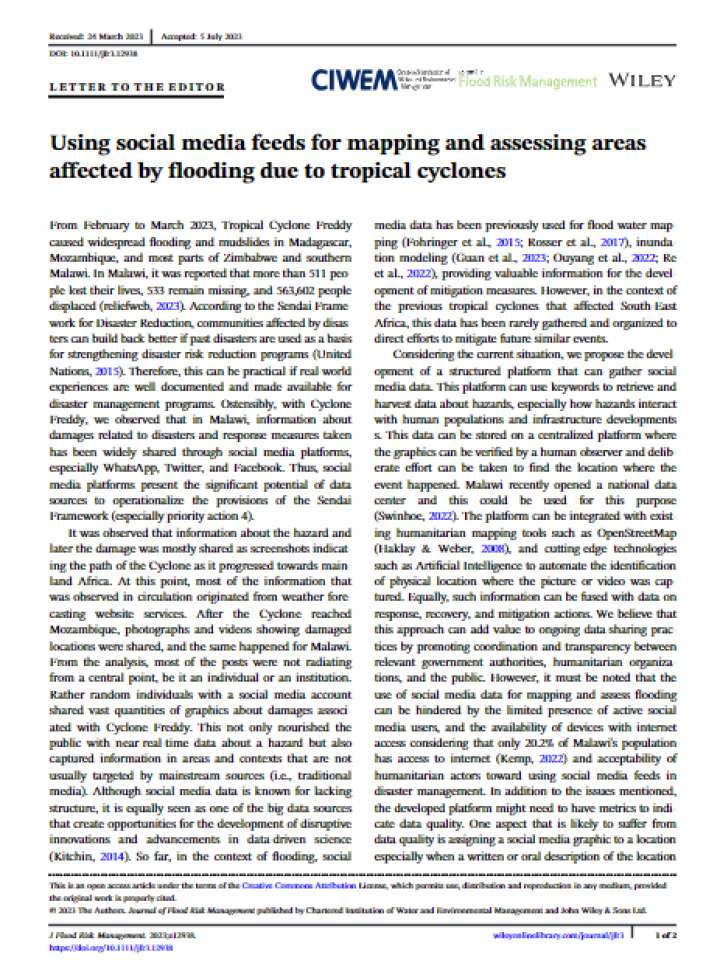Using social media feeds for mapping and assessing areas affected by flooding due to tropical cyclones
This paper argues that social media platforms present a significant potential of data sources to operationalize the provisions of the Sendai Framework. From February to March 2023, Tropical Cyclone Freddy caused widespread flooding and mudslides in Madagascar, Mozambique, and most parts of Zimbabwe and southern Malawi. In Malawi, it was reported that more than 511 people lost their lives, 533 remain missing, and 563,602 people displaced. According to the Sendai Framework for Disaster Reduction, communities affected by disasters can build back better if past disasters are used as a basis for strengthening disaster risk reduction programs. Therefore, this can be practical if real-world experiences are well documented and made available for disaster management programs. Ostensibly, with Cyclone Freddy, wwe observed that in Malawi, information about damages related to disasters and response measures taken has been widely shared through social media platforms, especially WhatsApp, Twitter, and Facebook.
It was observed that information about the hazard and later the damage was mostly shared as screenshots indicating the path of the Cyclone as it progressed towards mainland Africa. Considering the current situation, the researchers propose the development of a structured platform that can gather social media data. This platform can use keywords to retrieve and harvest data about hazards, especially how hazards interact with human populations and infrastructure developments s. This data can be stored on a centralized platform where the graphics can be verified by a human observer and deliberate effort can be taken to find the location where the event happened. In conclusion, developing a structured platform and yet relevant platform for capturing social media data and generating meaningful information may potentially bring significant transformation. This cannot be only useful in Malawi but in many countries where flooding is common and monitoring systems are lacking.
Explore further

